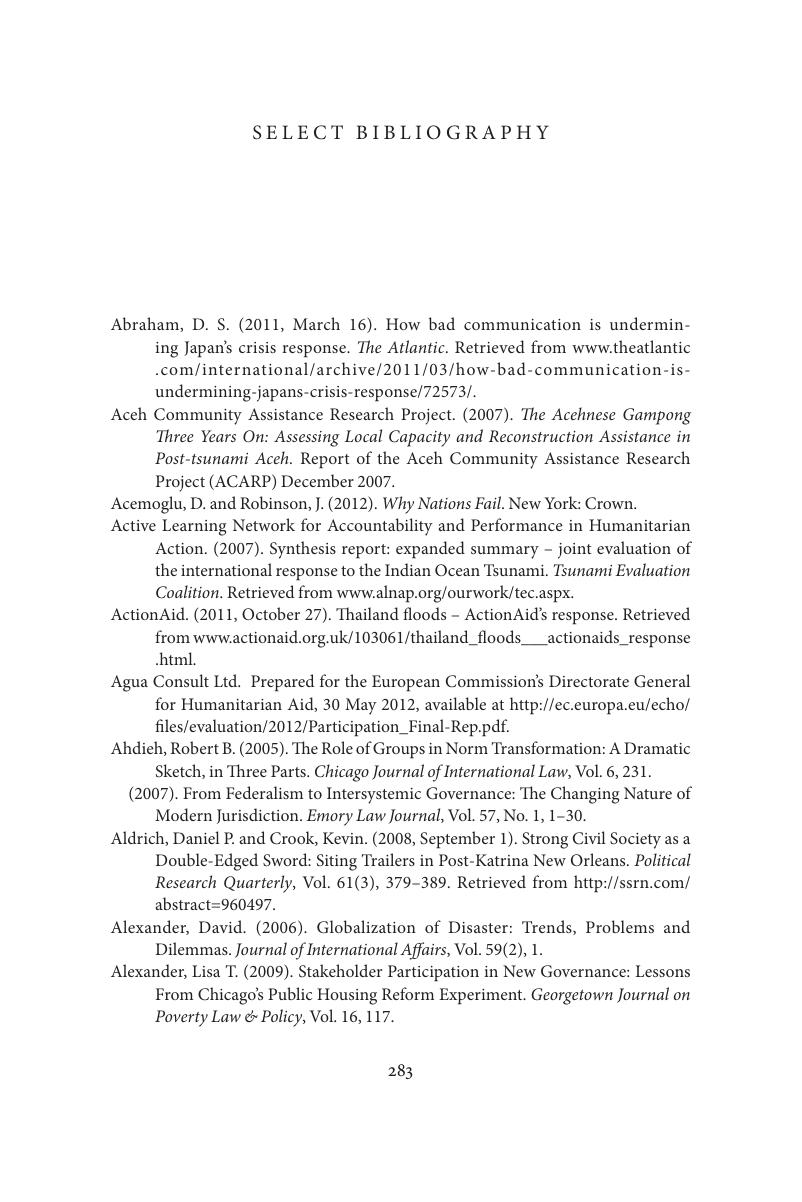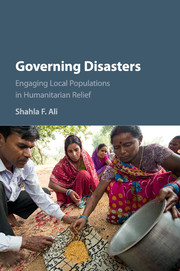Book contents
- Governing Disasters
- Governing Disasters
- Copyright page
- Dedication
- Contents
- Figures and Tables
- Book part
- Treaties
- Other International Instruments
- Cases
- Introduction
- Part I Overview
- Part II International-Led Response
- Part III State-Led Response
- Part IV Examining Public–Private Partnerships
- Part V Survey Findings and Policy Recommendations
- Select Bibliography
- Index
- References
Select Bibliography
Published online by Cambridge University Press: 05 June 2016
- Governing Disasters
- Governing Disasters
- Copyright page
- Dedication
- Contents
- Figures and Tables
- Book part
- Treaties
- Other International Instruments
- Cases
- Introduction
- Part I Overview
- Part II International-Led Response
- Part III State-Led Response
- Part IV Examining Public–Private Partnerships
- Part V Survey Findings and Policy Recommendations
- Select Bibliography
- Index
- References
Summary

- Type
- Chapter
- Information
- Governing DisastersEngaging Local Populations in Humanitarian Relief, pp. 283 - 320Publisher: Cambridge University PressPrint publication year: 2016



